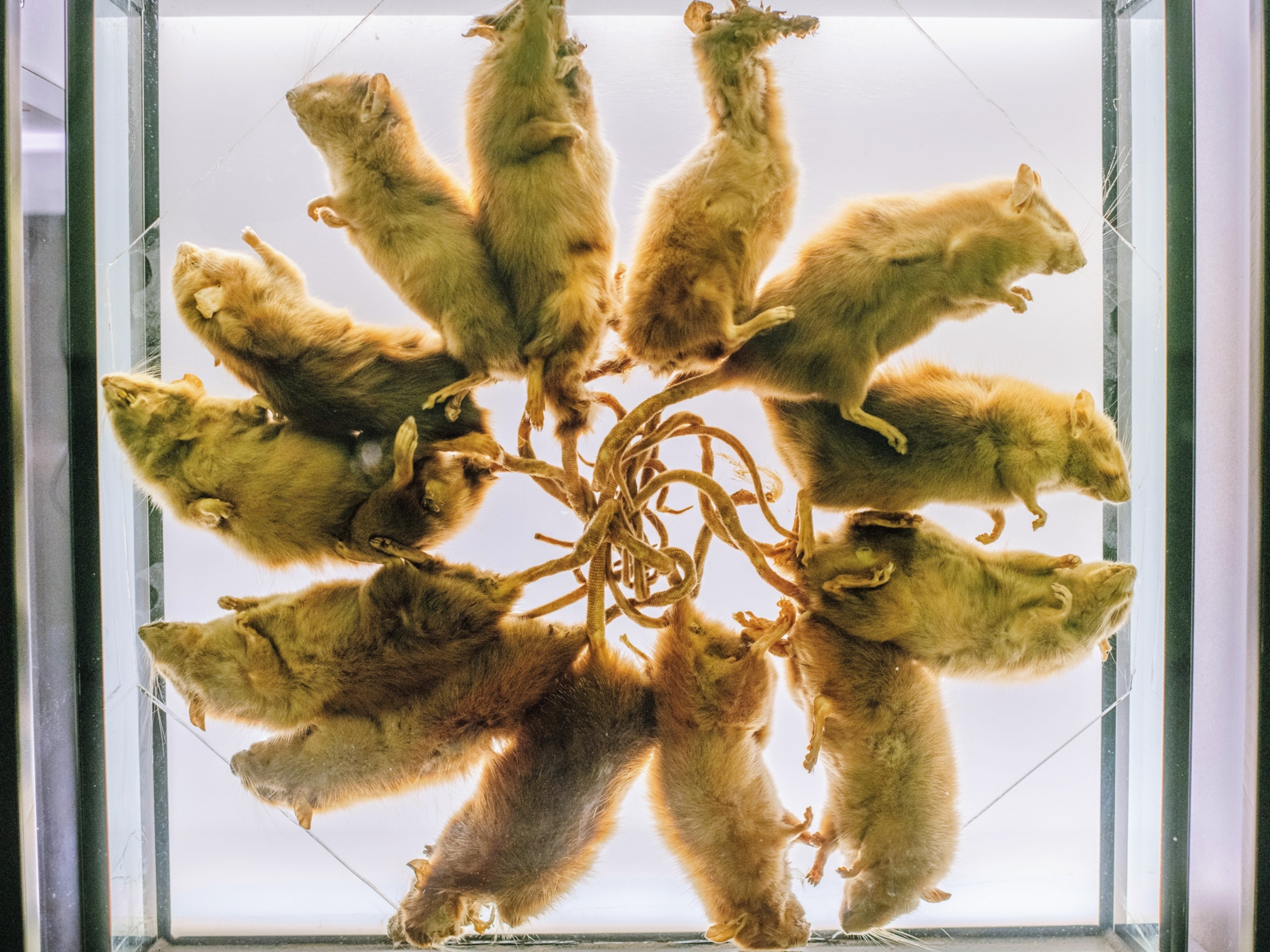
Get to the Point: 5 Fast Facts About Porcupines
We identify a porcupine in a reader's photo and separate prickly fact from fiction.
When Emily in Canada asked for help identifying what species of porcupine she photographed here in NatGeo's Your Shot, we turned to Uldis Roze of Queens College at the City University of New York, who wrote the book on porcupines.
If you didn't know there were different species of porcupines, never fear. In our Weird Animal Question of the Week, we'll fill you in on the most surprising facts about these prickly pals.
Roze says Emily's subject is Coendou mexicanus, a Mexican long-haired porcupine, identifiable by its prehensile tail and long hair hiding those famous quills. The species is found as far south as Panama (Emily photographed it in Costa Rica), and it and its fellow porcupine species aren't well studied, Roze says.
Roze shared these little-known points on the pointy rodents.
Porcupine attacks are pre-medicated.
The quills of the North American porcupine (Erethizon dorsatum) have a topical antibiotic on them, so even though getting stuck is painful, it won't cause infection.
Porcupines don't medicate their quills as a courtesy to others, though. "It's a defense against self-quilling," Roze says. After all, an animal that walks around covered in sharp objects is bound to stick itself once in a while.
To keep themselves from falling out of trees and quilling themselves, 15 of the 16 species of New World porcupine have a prehensile tail that can grab onto branches (all Old World porcupines are ground dwellers). Only the North American porcupine does not, which may explain why that species evolved the antibiotic: as a defense against those selfie-sticks that can occur during a tumble. (Related: How Did Porcupine Repel 17 Lions? Explaining Viral Video.)
Porcupine munchies can bring on flowers.
Mexican long-haired porcupines are lightweight animals with big appetites. They can strip a tree of fruit and seeds quickly, and tropical trees defend themselves against such predation by flowering and fruiting in one great burst.
Even the most voracious vegetarians can't eat all of that flora, "so some seeds can escape and germinate," Roze says. Since different trees flower at different times of year, the porcupines can always find a meal.
These guys are terrible at conversation.
Teddy Bear, the pumpkin-eating, Super Bowl-predicting porcupine, has become quite a celebrity. He's known for his squeaky mumblings that sometimes sound a bit like words, and he even voiced a hedgehog in The Hobbit: An Unexpected Journey.
In the wild, porcupines aren't so talkative.
Porcupines are solitary creatures, so there's not really anyone for them to chat with, Roze says.
Like his wild peers, Teddy prefers his own company, says Allison Blankenship, founder of Zooniversity, the Texas traveling educational zoo where Teddy was raised after being abandoned as a newborn. He has never socialized with other porcupines and was raised with a Yorkshire terrier, so he may have "some species-identity confusion," she says. But Teddy easily communicates his wants and needs to his human keepers.
Teddy's vocals remind Roze of the squabbling wild porcupines do when sharing a den, as in this video where Teddy is asked to share. (In fairness, I don't always like to share either.)
Other wild porcupine vocals include clacking teeth to warn away predators, the "rhythmical singing" sound mothers make for babies, and the high-pitched, angry howls of males battling over females.
Smell ya later: Porcupines are pungent.
One of the olfactory signals porcupines use is a pungent odor that lets potential predators know they've raised their quills and they're not afraid to use them.
The chemical compound is R-delta-decalactone, but the smell is indescribable as anything but porcupine, Roze says. After all, if you're signaling your presence, you don't want to smell like anything else.
For porcupines, urination can be romantic.
Female porcupines mate once a year, and often the males bring them into estrus by urinating on them. In mice, one compound is particular to this type of urination. Roze thinks porcupines may have a similar unique compound as well.
"This is not like normal urination," Roze says. "It's a high-velocity signal," with droplets that can target a female on a faraway branch.
"It's a beautiful thing," Roze says. "Quite amazing to see."
Got a question about the weird and wild animal world? Tweet me or leave me a note or photo in the comments below. You can also follow me on Facebook.





